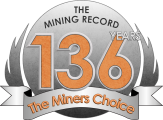Phase One Drill Program At The Sunnyside Exploration Project
Phase One Drill Program At The Sunnyside Exploration Project
VANCOUVER – Barksdale Resources Corp. reported assays from the lower portion of the SUN-003 drill hole, completed as part of the ongoing Phase I drill program at the Sunnyside copper-lead-zinc-silver exploration project in Arizona. Barksdale has intercepted multiple intervals of carbonate replacement style mineralization (CRD) in SUN-003, including assays released prior. Additional assays from the lower zones of polymetallic CRD mineralization intersected in SUN-003 include the following results: 1) 2.28m grading 1.72% Zn, 0.63% Pb, 13.5 g/t Ag, and 0.016 g/t Au from 1480.57m depth. 3) 1.01m grading 0.46% Cu, 11.9% Zn, 3.8% Pb, 377 g/t Ag, and 0.028 g/t Au from 1550.67m depth. Barksdale aims to provide guidance for the remaining 2024 drill campaign within the next 30-45 days.
Rick Trotman, President and CEO, said, “The final assays from the lower portion of SUN-003 contains multiple additional zones of narrow polymetallic CRD mineralization outboard of the higher-grade feeder structure. We look forward to drilling to the southeast of SUN-003, where our model suggests that we’ll vector into areas of increased structural preparation, heat, and fluid flow. Once we have multiple pierce points into that higher-grade corridor, we can begin stepping out to determine the true scale of the zone as it trends back towards the porphyry. The Company is actively exploring a range of strategic opportunities for our upcoming drilling initiatives. We look forward to sharing these advancements with our valued investors in the coming 30-45 days.”
SUN-003 is a vertical hole collared 2m from historic hole TCH-2 and was drilled to a total depth of approximately 1,653m. It drifted slightly to the north-northeast and intersected the top of the Paleozoic carbonate rocks at 1,239m depth, approximately 65m to the north and 80m deeper than discovery hole TCH-2. This confirms the general dip of the carbonate stratigraphy to be approximately 35 degrees to the north.




Comments (0)